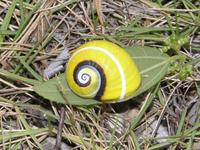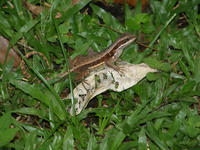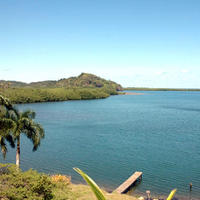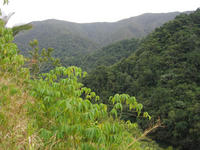You are in: Caribbean -> Cuba -> Alejandro de Humbold... , and traditional search or Image Gallery will yield results of this site only
Alejandro de Humboldt National Park
| Site number: | 839 |
|
| Type of site: | Natural | |
| Date of Inscription: | 2001 | |
| Location: | South America, Caribbean, Cuba, Guantánamo and Holguín Provinces | |
Up to 75 images are shown here. Click on each for more details or on Image Gallery for more images.
| Description: | One of the most biologically diverse tropical island sites on earth was shaped through complex geology and varied topography, which gave rise to a multiplicity of ecosystems and species unparalleled in the insular Caribbean. With underlying rocks being toxic to plants, local species have had to adapt in order to endure the hostile conditions. As a result of this unique evolutionary process many new species have developed and, consequently the park can be considered one of the most important natural areas in the Western Hemisphere, in terms of conservation of endemic plant species. Vertebrate and invertebrate endemism is also very high. --WHMNet paraphrase from the description at WHC Site, where additional information is available. | |
| Parque Nacional Alejandro de Humboldt is a national park in the Cuban provinces of Holguín and Guantánamo. It is named after the German scientist Alexander von Humboldt who visited the island in 1800 and 1801. The park was inscribed as a UNESCO World Heritage Site in 2001 for of its size, altitude range, complex lithology, landform diversity, and wealth of endemic flora and fauna. The rivers that flow off the peaks of the park are some of the largest in the insular Caribbean. The park is said to be the most humid place in Cuba and this causes a high biological diversity. The park has an area of 711.4 km² (274.7 sq mi), of which 68.89 km² (26.6 sq mi) land area and 2.25 km² (0.9 sq mi) marine area. Elevation ranges from sea level to 1,168 m (3,832 ft) on El Toldo Peak. 16 of Cuba's 28 endemic plant species are protected in the park including such fauna as Dracaena cubensis and Podocarpus ekman. Fauna present in the park includes various species of parrots, lizards, hummingbirds, the endangered Cuban Solenodon (endemic), Hutia and snails. --Wikipedia. Text is available under the Creative Commons Attribution-ShareAlike License. | ||
| Source: | http://whc.unesco.org/en/list/839 | |
| Reference: | 1. UNESCO World Heritage Center, Site Page. | |


















